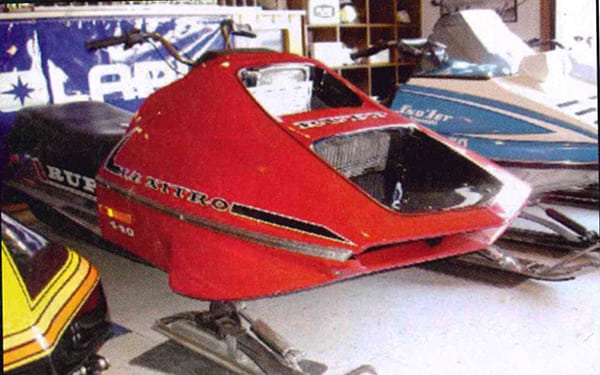
Maybe it’s no coincidence that the words racy, red and Rupp all start with the same letter. The sanguine-hued sleds from Ohio were a prominent part of the performance scene for more than a decade in the heart of snowmobiling’s golden era.
Few companies used racing to market sleds as well as did performance enthusiast Mickey Rupp’s fun machine enterprise. Always outnumbered by the hordes of yellow, black and red-white-and-blue machines, and with additional competition from many other brands, Rupp still won more than its fair share of races, particularly on the grass.
One of my earliest memories in the snow machine business, from the days when “early season” meant September, is a Rupp district sales rep explaining the importance of winning grass drags – “They’re really big for us,” he emphasized.
SOLVING A PROBLEM
By 1974 Rupp had a problem. The brand had done quite well in oval sprint and grass drag competition during the first years of the decade with its Magnum and Nitro racing models. Its Stock class success included domination of the 400 class in 1971, a 1972 World Series win in 340 and a 1973 World Series win in Junior II.
The Modified class Magnums had free-air engines like all its contemporaries, but the Stock class Rupps all used engines cooled by axial fans.
The free-airs generally developed more initial horsepower with their extensively finned heads that dissipated heat into the passing air stream, but power output dropped as they got hot from continuous running. This wasn’t a big problem in a winter race, but it was definitely an issue in the summer and fall drags.
The axial fans eliminated most of the cooling fins in favor of an overdriven propeller that forced a high-velocity stream of cooling air through a shroud across small fins in the top of the cylinders. The system added a few pounds of weight for the fan, fan belt, pulleys and air ducting, plus the mechanical drag sucked up a few horsepower, but this also gave the fan-cooled engine a more consistent operating temperature – thus an advantage in longer races, especially in warm-weather grass drags (at least for a while).
In the summer of 1972, an almost overnight industry shift to free-air engines for the emerging 1973 hot stock racers left Rupp on the outside looking in. This shift was driven by many factors, including the increasing importance of stock-class racing to snowmobile sales as well as improved engineering that allowed the free-airs to produce enough additional power to offset the advantage of consistent cooling of the fans. The racy image of the free-airs was a significant factor, too.
The big guys – Arctic Cat, Polaris and Bombardier – could afford to build stock race sleds with free-air engines for winter-time oval track use without much regard for trail use or grass drags. Smaller companies like Rupp needed to sell its stock race sleds to trail riders to make it profitable to build. To Rupp’s disadvantage, many people believed – wrongly, as it turned out – that free-air engines were no good on the trail. So Rupp engineers made a decision to stay with the fans, as they felt that fans best suited their needs on the grass.
Subsequently, Rupp’s fan-cooled Nitros were generally blown into the weeds in 1974 when the free-air revolution really took hold, despite having done well overall on the racetrack in 1972 and managed to hang on in 1973 – this was particularly true on the oval track, which got most of the press coverage. Something had to be done, and that something became the 1975 Nitro F/A.
NO BONES ABOUT IT

Rupp sales literature and press releases made no bones about it: “The F/A stands for ‘free-air.’ That should tell you a thing or two. Like maybe this sled isn’t designed for casual cruising, which it isn’t.”
This was a stock racer, pure and simple. No more worrying about the trail riders, because there were other Nitro models for them. No cooling fan to add weight and consume horsepower, either.
The Nitro F/A was new from the ground up. Sleek and aggressively styled like no Rupp before it, this machine was engineered to minimize weight. Unlike earlier Nitros, it didn’t have a windshield, bumpers, tunnel stirrups or passenger hand-holders. The slide rails and chaincase were made of lightweight magnesium and short, aluminum-racing skis were fitted. Gel-coated fiberglass side panels on the belly pan further reduced weight, and the 16-inch wide grauser bar track weighed just 31 pounds.
Standard equipment included a tether switch, a color-coded electrical panel and a tachometer, but no speedometer or odometer. The unpadded handlebars were height adjustable, and the left side of the seat had a snap-on pad to cushion the rider’s leg against the tunnel during weight shifting left-turns. A tiny competition-style fuel tank precluded serious trail riding, but the headlight and taillight were part of the equipment necessary for Stock class racing under United States Snowmobile Association (USSA) rules.
The skis featured an unusual two-position, forward spring mount. Rearward weight transfer was said to improve when the front end of the spring was installed in the upper position, although this feature was more important for drag racing than oval use. The sled’s 43-inch overall width was about 6 inches more than its widest contemporaries and allowed an unusually wide ski stance for better stability – It was a glimpse of things to come.
Kohler free-air power was employed. These were not the “Sunburst” radial-finned models that were used extensively in other race sleds, but rather a more traditional design in 340 and 440 sizes for the top two of the new 1975 USSA Stock classes. A special crankcase air duct helped with the cooling issues. Perhaps more importantly, the engine was located low in the front of the sled instead of up in the rider’s lap like in previous Nitros. Mikuni VM carbs and capacitor discharge ignition were fitted, and the exhaust system had twin-tuned pipes feeding a removable muffler.
In short, the rakishly good-looking Nitro F/A was a limited-edition machine suitable for racers only, and not just due to the engine.
OUT-MANNED, NOT OUT-GUNNED
The 1975 winter oval racing season began with promise as Vermont Rupp ace Keith Armstrong won two classes at the USSA Eastern opener in Jackman, Maine. If nothing else, it showed that the Nitro F/A was definitely a competitive sled.
But there weren’t a lot of victories for the new Rupp stocker that winter, as Cat, Ski-Doo and a new rising force, Mercury, piled up the wins in arguably the most competitive race season ever. A number of those firsts were taken by racers who had been Rupp riders just a couple of years before, but had defected to Merc or Cat when Rupp was struggling to stay competitive during the 1974 season.
Rupp was now out-manned, but not out-gunned. The Rupp racing organization simply didn’t have critical mass any more, and the red sleds ended up in eighth place among the 13 different brands that recorded at least one win during the winter 1975 USSA competitions. Although the Nitro F/A did take a few more sanctioned-circuit firsts in places like Greenville, Maine, and Okoboji, Iowa, many of Rupp’s 1975 victories were with modified-class sleds. The best the F/A would do at the USSA World Series in Weedsport, New York, was Ohio racer Ron Johnson’s third in 440 Stock.
But all was not a loss. In a twist of fate, the Nitro F/A turned out to be an excellent drag sled. Light, powerful and with superior weight transfer from its suspension engineering, the F/A was well suited for grass racing, and it recorded many drag wins, particularly in the East. As reported in Snow Week, Dan Kneeskern’s four firsts on a pair of Nitro F/As led Rupp domination of the air-cooled Stock classes at the October, 1976 Herkimer County Sno Sho drags in Frankfort, New York, which was a major race at the time.
A radical departure from previous Nitros, the sleek Nitro F/A remained a very competitive grass dragger – particularly at the smaller local events – for several more years even as the once red-hot Rupp snowmobile brand slowly faded to black.
Editor’s Note: This Flashback article from International Snowmobile Hall of Fame writer David Wells first appeared in Snow Goer magazine. To see more of Wells’ great articles on interesting old sleds, plus in-depth new sled evaluations, aftermarket product tests, informative how-to story, interesting travel features, Snowmobile Science articles and much more, subscribe to Snow Goer magazine.

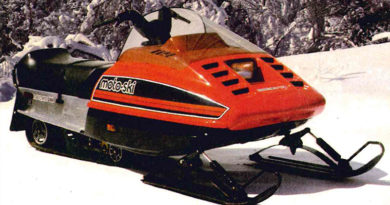
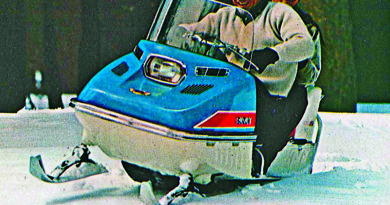
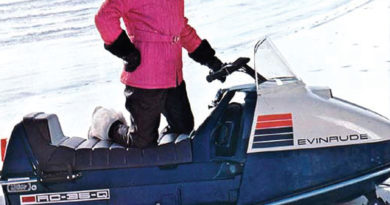
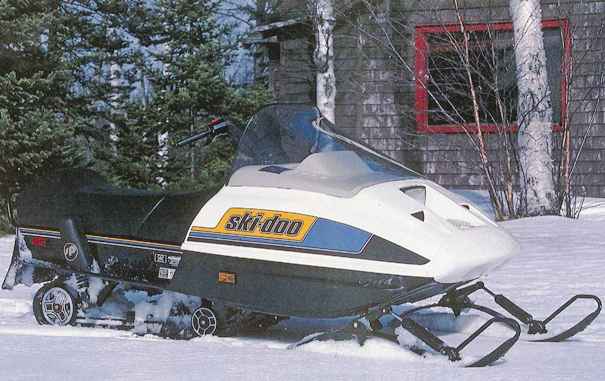


Thank you for your article, we had a Rupp dealer in our village and I always loved the looks. A friend had a Yankee, when we were 19 he got a Nitro FA. He left it at our house a lot so I got to drive it quite a bit. I am not sure why but he always had a hard time starting it but I didn’t. It wasn’t studded and I didn’t like the cleated track when running side roads usually ice covered. I had a 1978 exciter at the time and it was a much user friendly sled.
We did take both to the groomed trails and even went through the bush together. Not sure whatever became of it. It was one of the best looking sleds ever.